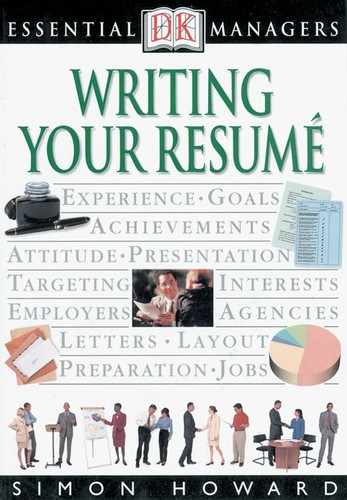Adapting your Resumé
Your resumé is a living document – in fact, not just one document but many. Your life never stands still, so neither should your resumé. Just as different people see different sides of you at different times, your resumé should change according to the situation.
TIP
Be prepared to edit, re-edit, and revise your resumé many times.
Questions to ask yourself
Am I looking for a change of direction in my career?
Have I made a list of my transferable skills and career objectives that I can refer to?
Do I understand the difference between a functional and chronological style of resumé, and when to use each one?
Do my skills and experience match the jobs that I am applying for?
Choosing your resumé
Too many people write their first resumé and then spend the rest of their career modifying the same document. But at different times of your life you will need different resumés. At some points in your career you will be selling your potential, at others, your employment history. However, it will always be your transferable skills that ultimately win you the job. Look at each of the example resumés in this section to see if there are elements that are relevant to you. Remember, whatever skills you are seeking to communicate in your resumé must also be supported by evidence of their use.
Being aware
As this case illustrates, the one overriding factor that influences the content and structure of your resumé is the job you are applying for. It is the person who is going to read your resumé, and what it is they are looking for, that should dictate how you put your resumé together.
Case study
Steve had worked for seven years in an advertising agency, rising to the position of group leader. However, he decided that the pressure of constant deadlines and frequent late nights were increasingly eating into his quality of life. In applying for jobs outside advertising, he at first used a conventional chronological resumé, but was advised that, for an employer outside the advertising sector, the job titles and companies he had worked for offered little insight to his abilities. After auditing his career, he identified his transferable skills and used a functional resumé, focusing on his skills in task management, training, team leadership, and attention to detail. Almost immediately, his conversion rate of applications sent to calls for interview improved. He now works in a team leadership role in the financial services industry.
Tailoring your resumé
No two employers and no two jobs are identical, so no one leaves one job to fulfill exactly the same role for another employer. It therefore follows that in your job search one resumé will not fit all situations. Whether it is a matter of slightly modifying your resumé for a specific job application, or writing a completely new resumé, you should change your approach to meet the needs of each situation. This is particularly true if you are applying for jobs outside your own employment sector – here you are selling your potential to do well in a particular job, rather than selling your history of having done well in other jobs. You must also be prepared to skillfully tailor your resumé for a particular application in order to highlight the precise skills and range of experience you know an employer is looking for.
TIP
Remember, an employer wants to see your potential.
TIP
Make sure that, whatever job you are applying for, it is your skills and achievements that stand out.
Things to do
Read all relevant job advertisements.
Pick out the relevant skills and experience that each job application requires.
Consider connecting to email and the Internet if you think they will help.
Review your career objectives regularly, and carefully adapt them.
Ask a friend to read and comment on your draft resumé.
